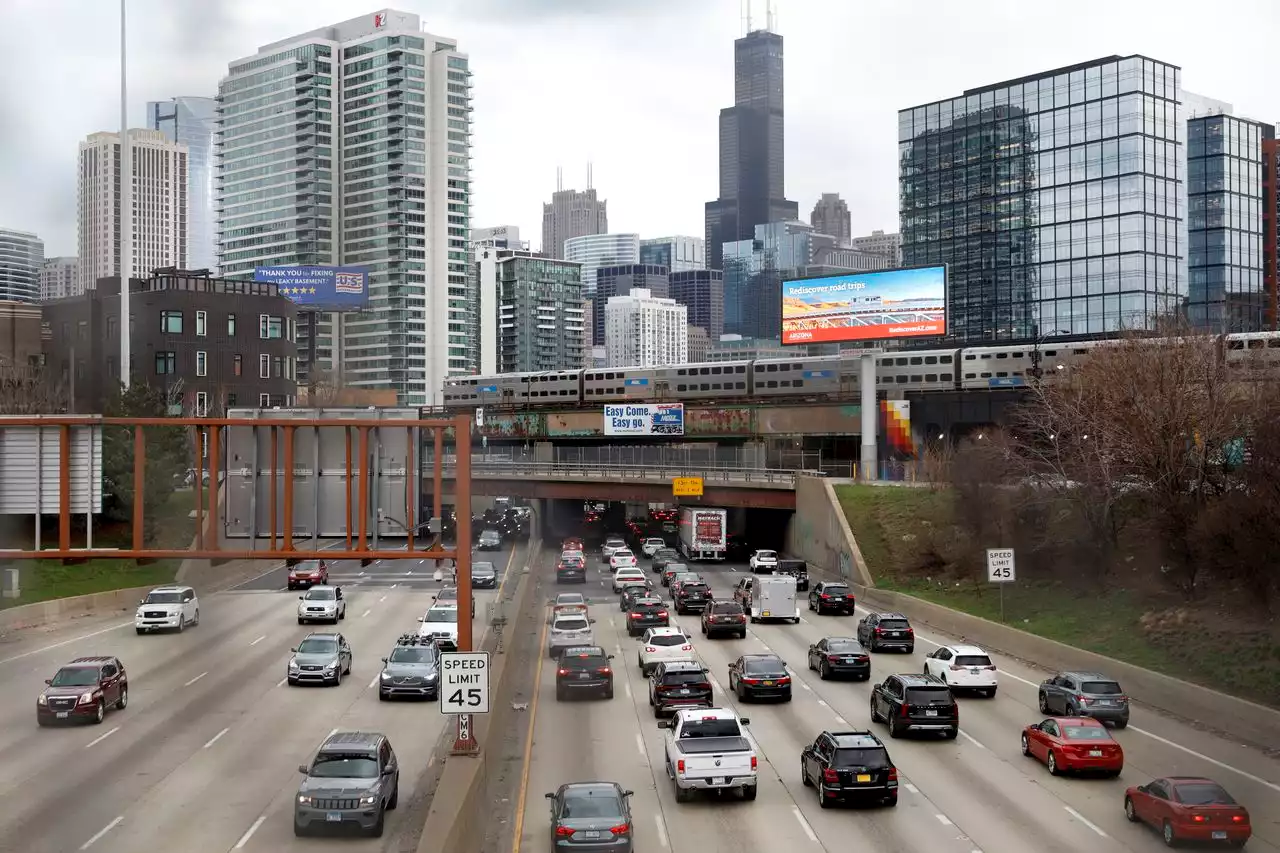The goal is to spur cities to adopt detailed plans to reduce traffic deaths by slowing down cars, carving out bike paths and wider sidewalks and nudging commuters to public transit.
FILE - Traffic flows along Interstate 90 highway as a Metra suburban commuter train moves along an elevated track in Chicago on March 31, 2021. With upcoming data showing traffic deaths soaring, the Biden administration is steering $5 billion in federal aid to cities and localities to address the growing crisis by slowing down cars, carving out bike paths and wider sidewalks, and nudging commuters to public transit.
Federal data being released this week by the Transportation Department is expected to show another big jump in U.S. traffic deaths through 2021, reflecting continued risky driving that began with the coronavirus pandemic in March 2020. Fatalities among pedestrians and cyclists have been rising faster than those within vehicles.
“We have become far too accustomed to the loss of life and serious injuries happening on our roadways,” he said. The department’s effort is part of a new national strategy, launched in January, to stem record increases in road fatalities with a “safe system” approach that promotes better road design, lower speed limits and tougher car safety regulations. About $5 million to $6 million for the grants is included in President Joe Biden’s infrastructure law.
It cites examples of good projects as those that promise to transform a high-crash roadway, such as by adding rumble strips to slow cars or installing speed cameras, which the department says could provide more equitable enforcement than police traffic stops; flashing beacons for pedestrian crosswalks; new “safe routes” via sidewalks or other protected pathways to school or public transit in underserved communities; and other “quick build” roadway changes designed with community input.
